In pictures: HMS Victory undergoes 3D-mapping
- Published
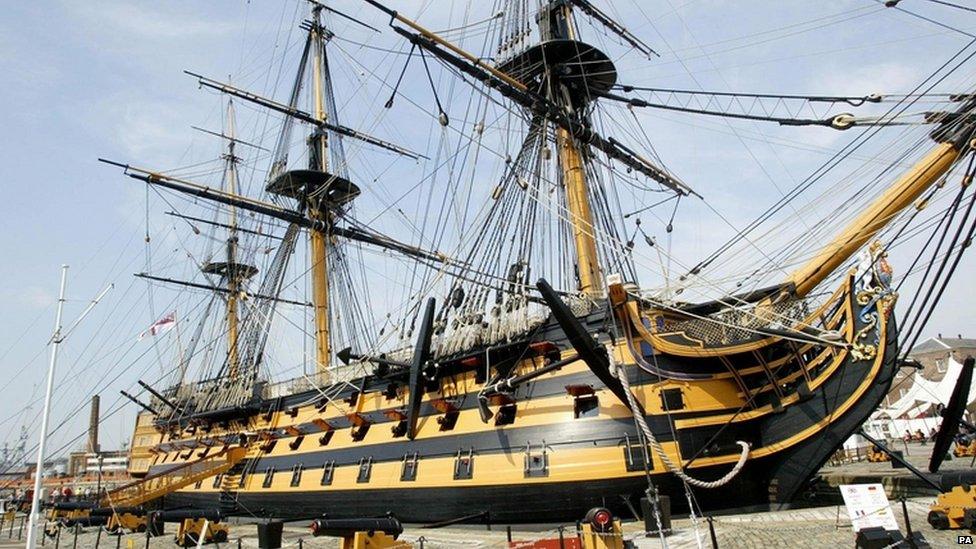
A £500,000 project to make a 3D map of HMS Victory aims to better understand how to maintain its conservation
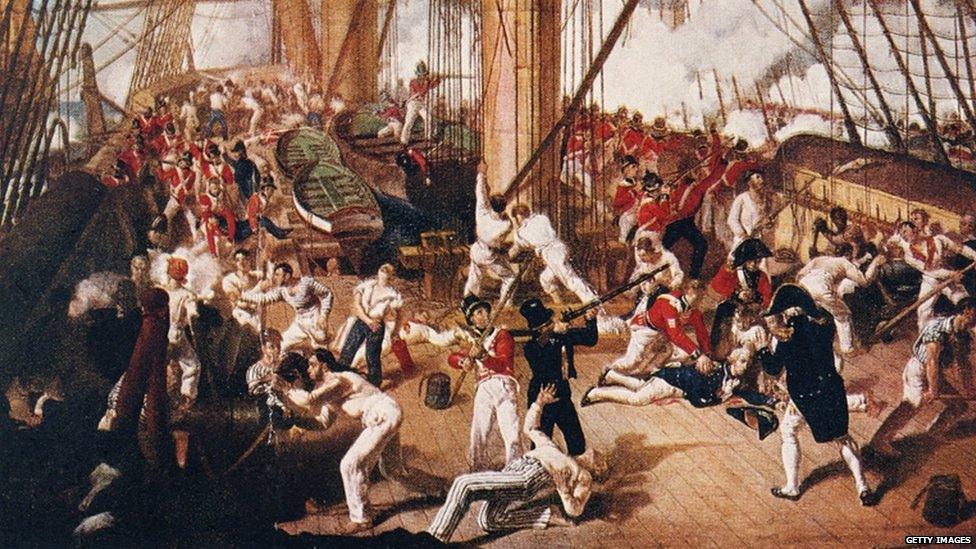
The ship was Lord Nelson's flagship at the Battle of Trafalgar in 1805, hailed as one of the most decisive naval battles of the Napoleonic wars. Nelson was injured during the battle and later died aboard the ship.
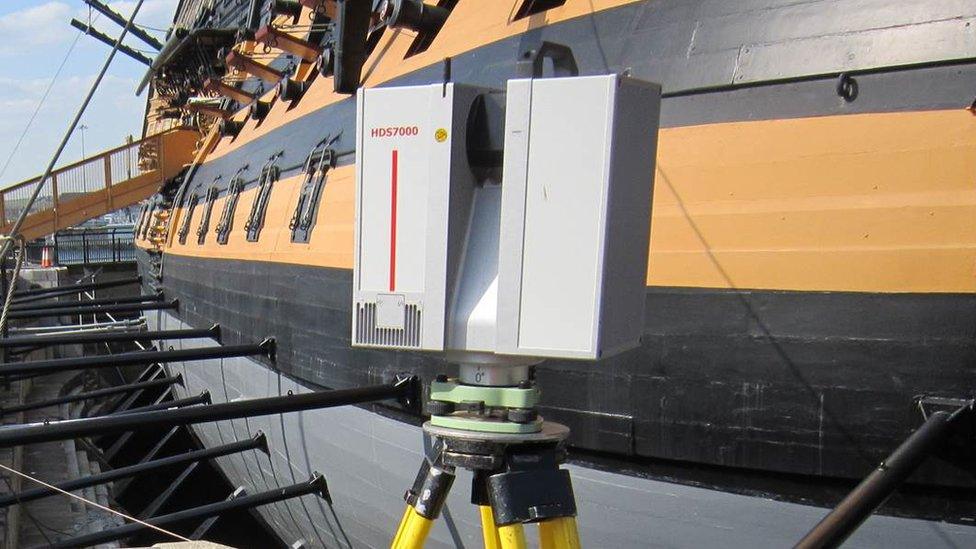
A Leica HDS6000 scanner capable of measuring at a density of 1mm was used to undertake the structural analysis of the ship

Surveyors at the Wiltshire-based Downland Partnership bounced lasers off the ship, taking 500,000 measurements per second
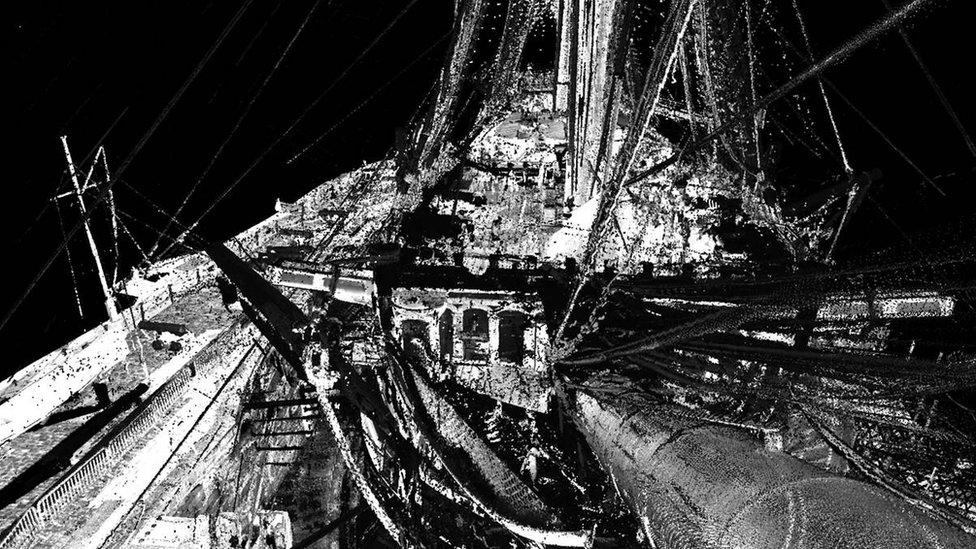
Andrew Baines, curator of HMS Victory, said: "We need to understand Victory as a structure... the engineers need a very precise computer model of the ship to accurately model it. The laser scans will deliver that model."
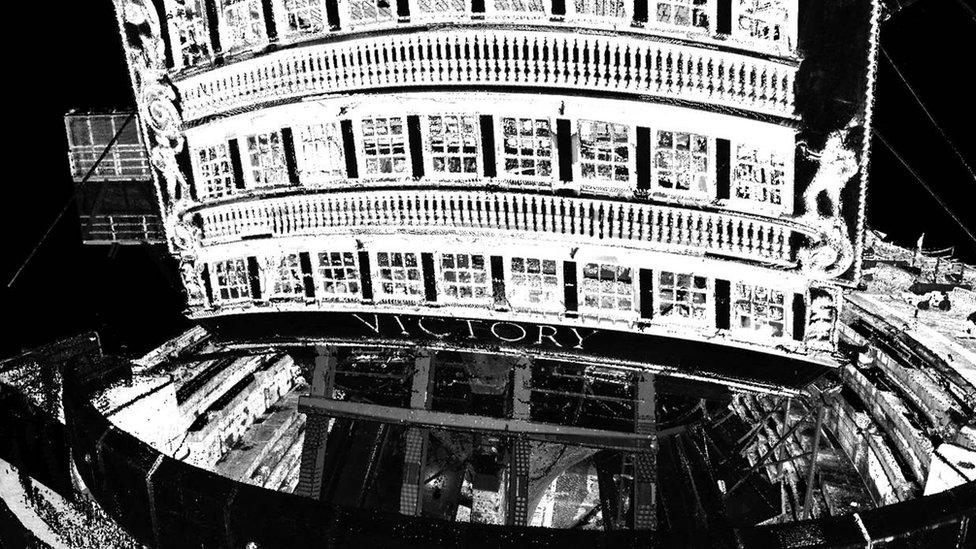
Mr Baines added: "In the long term it will allow us to understand the ship's structure and how it behaves, and plan the conservation of the ship in the most appropriate manner. It would have been impossible to ensure the best care is taken of Victory [otherwise]."
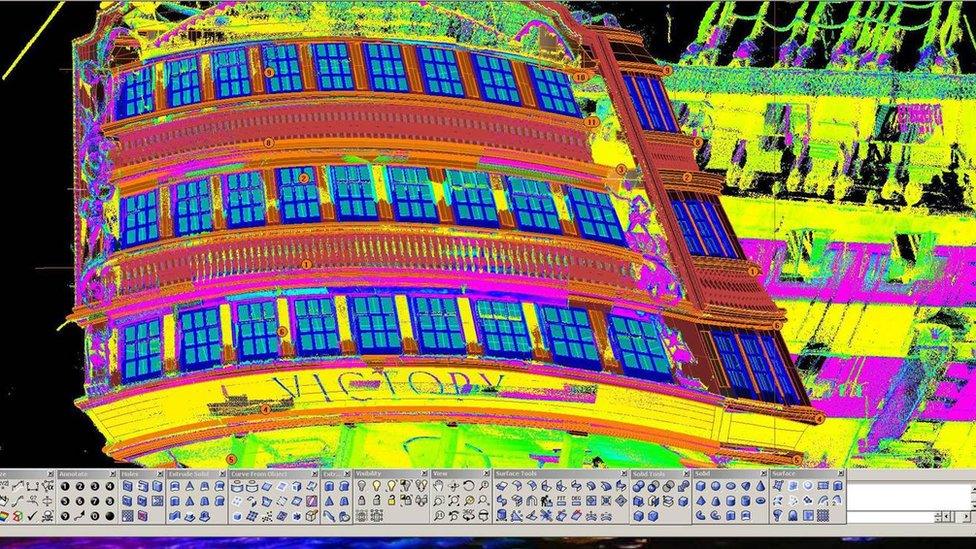
The scans of HMS Victory will allow future generations to study the timber ship's complex structure
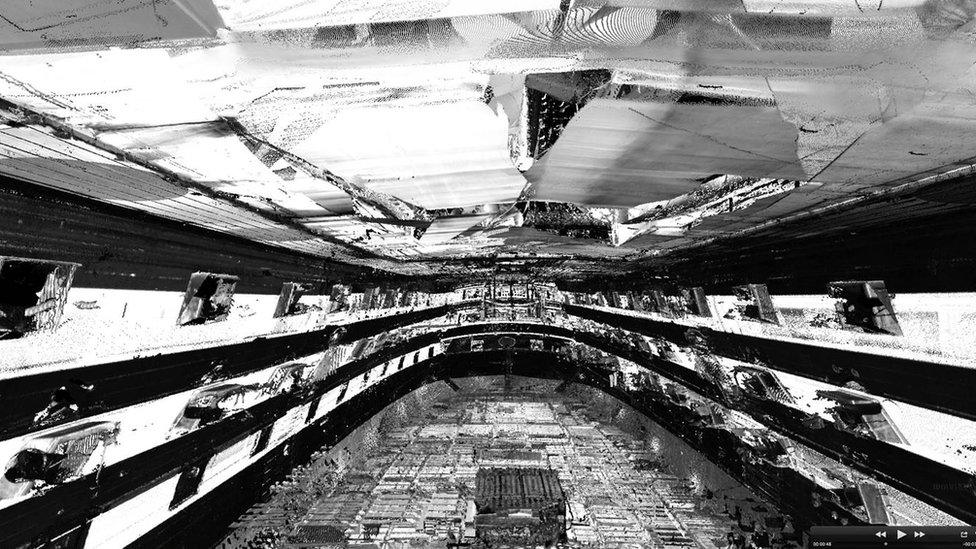
About 850 scans have been made of the vessel, which equates to about 90 billion different measurements
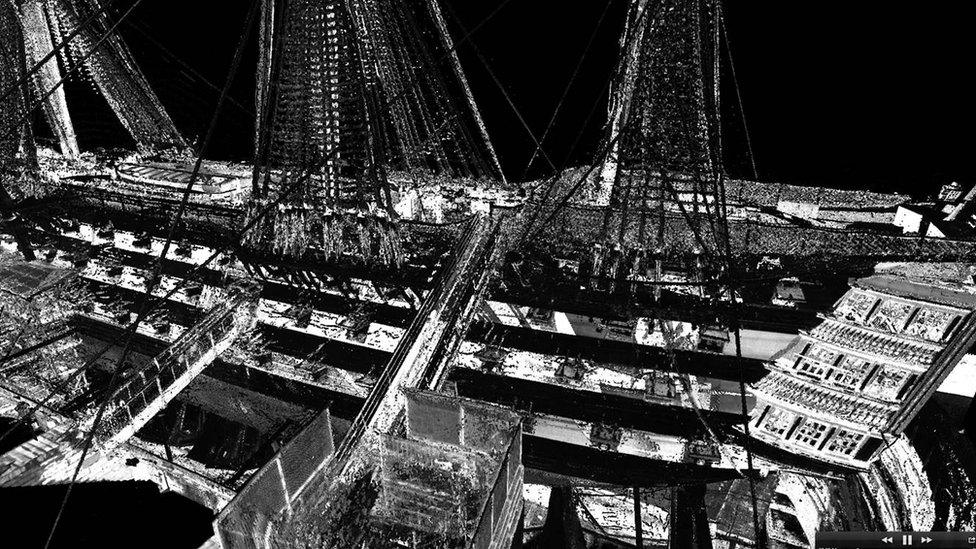
BAE Systems Surface Ships has started work to restore the ship as part of a £16m, five-year contract

The ship lies at the heart of Portsmouth's Historic Dockyard. "The scans are very impressive and have helped to raise awareness of the complex issues we must address in conserving it," Mr Baines said.
- Published28 March 2013
- Published10 December 2012
- Published20 June 2012